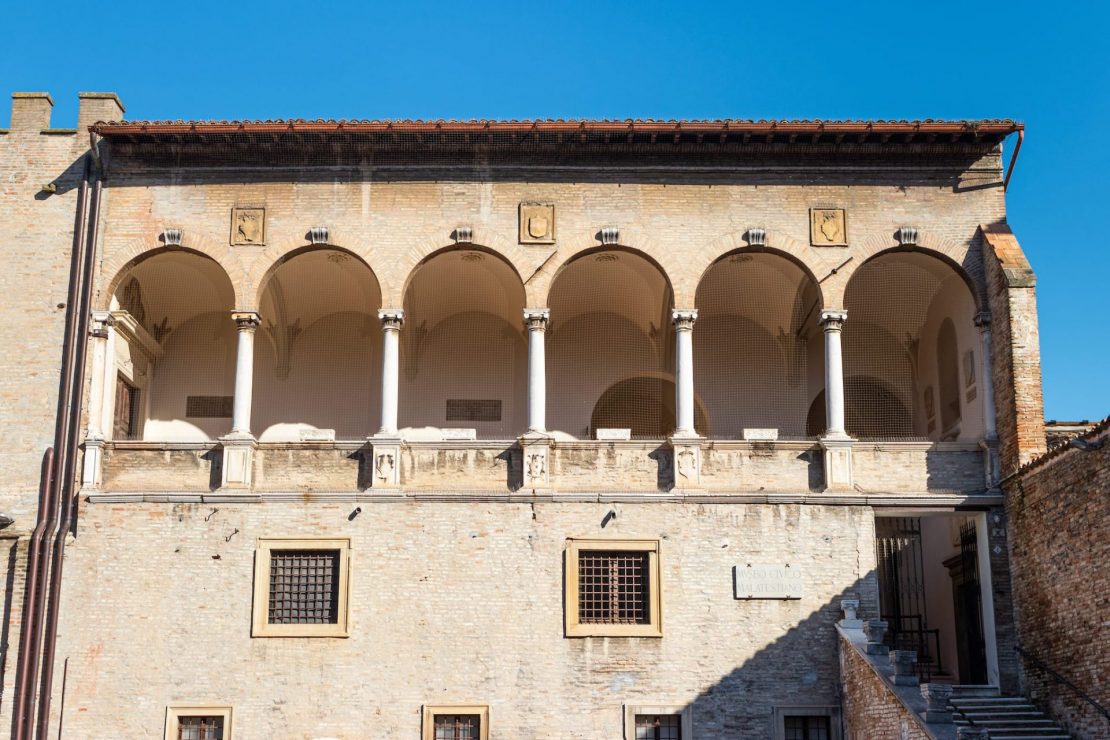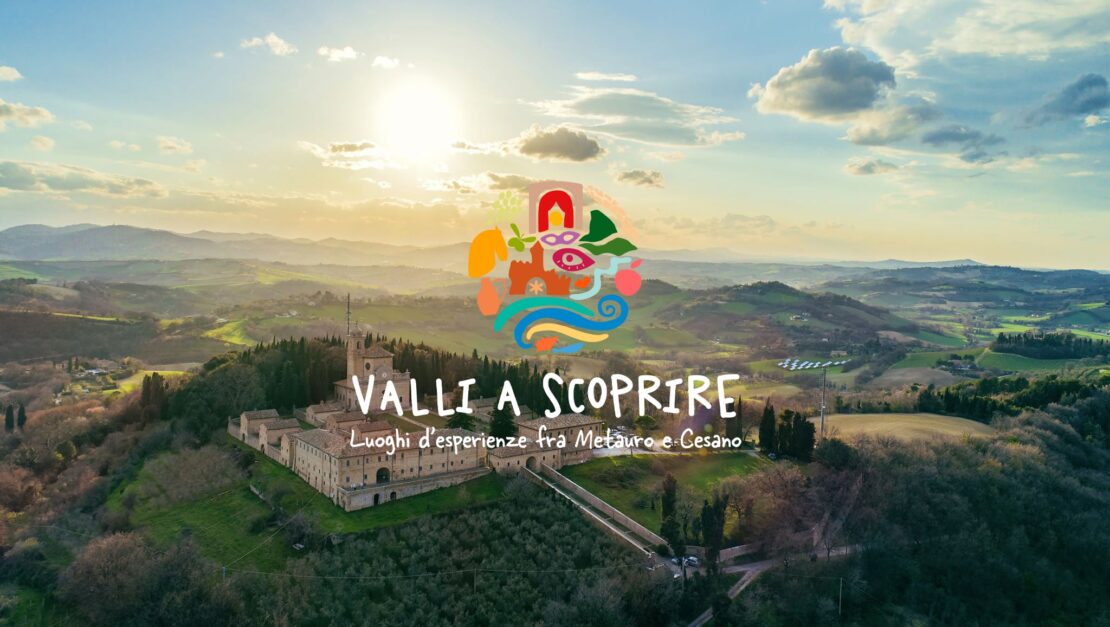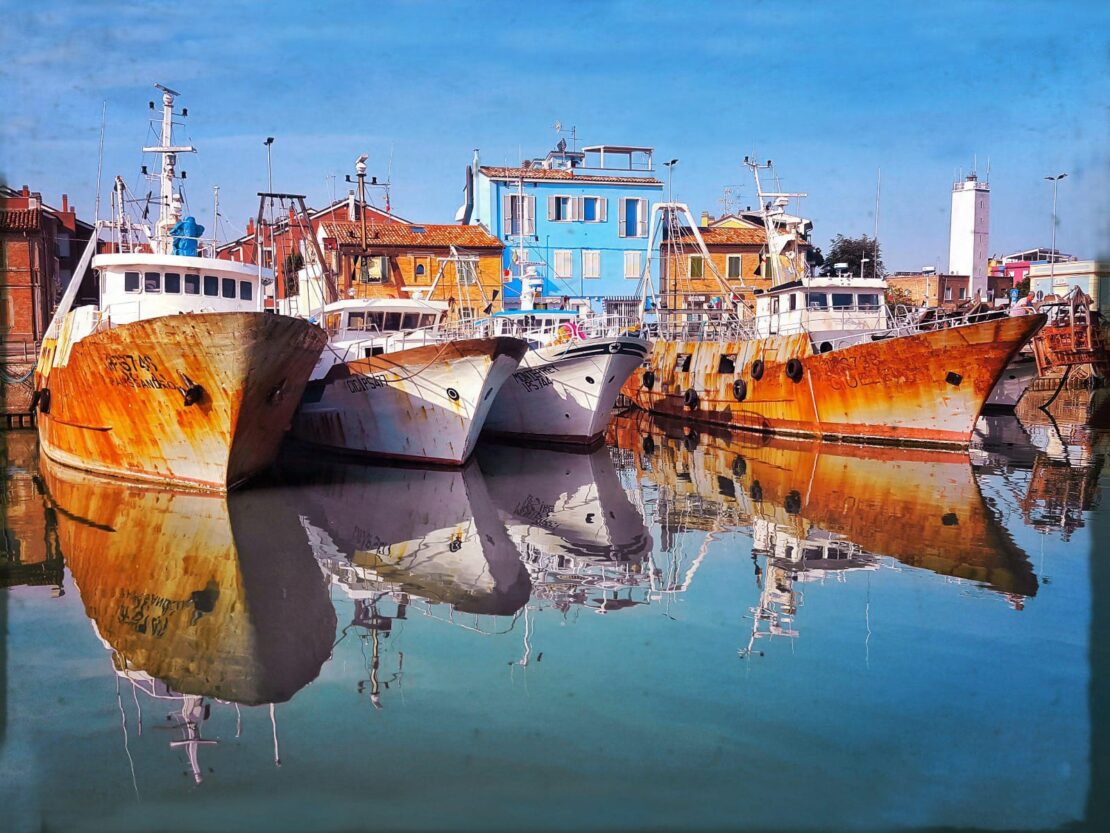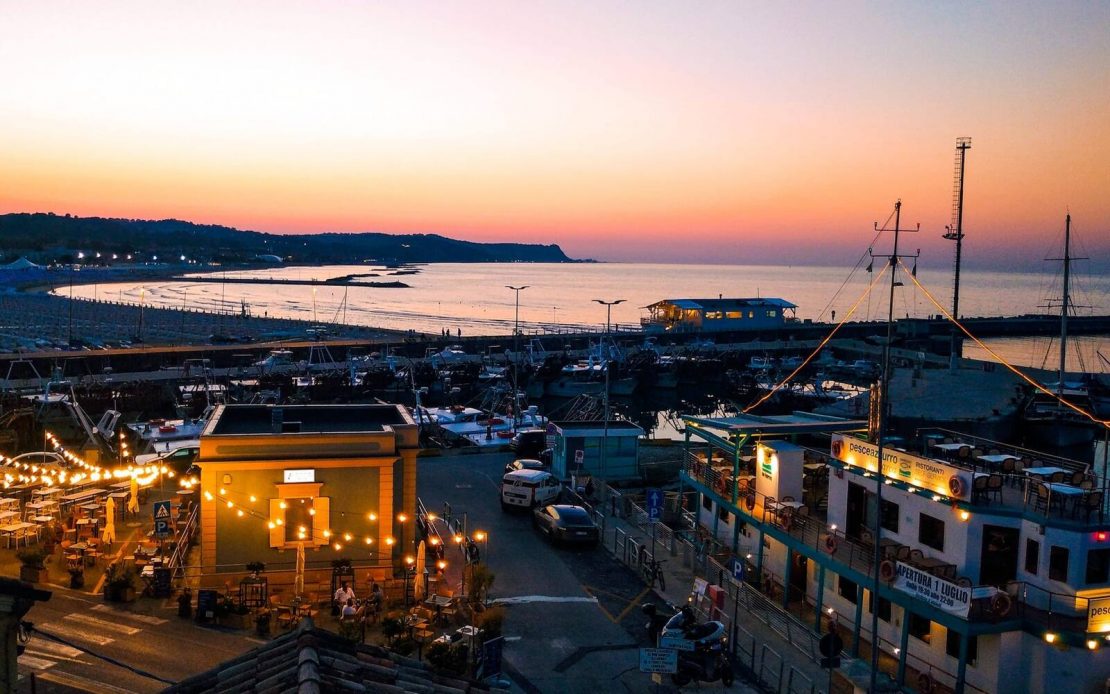Fano, the places to visit
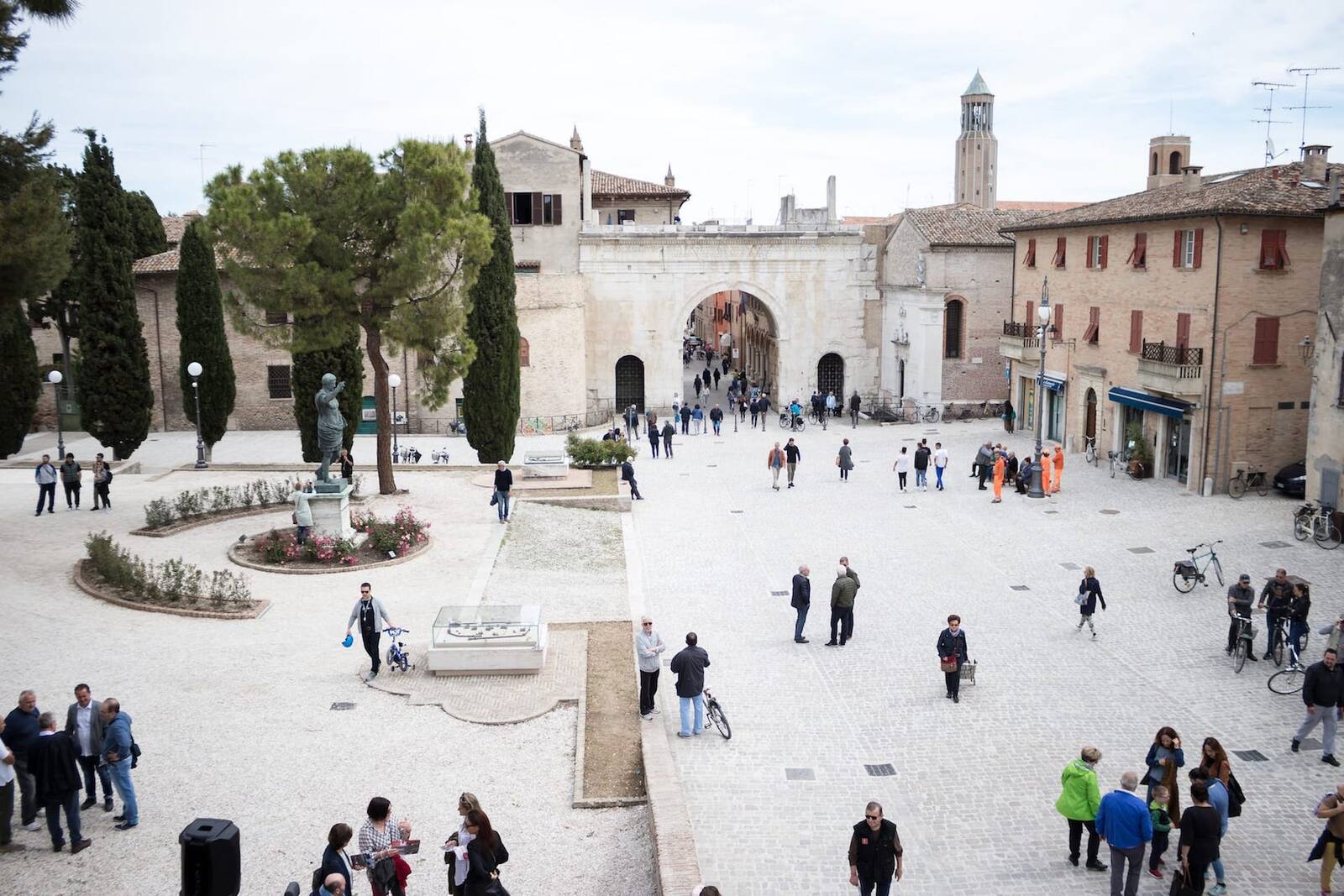
A city with an outstanding historical and cultural heritage, it is located in the heart of Le Marche, a geographically strategic area. In addition to having all the advantages of a seaside city, it boasts a verdant hinterland and nature in which to immerse oneself in bucolic experiences, not to mention the many notable historical and architectural elements that characterize it.
From Fanum Fortunae to Marche’s third city.
Fano’s origins go back a long way, from when the ancient Romans settled here giving it the name “Fanum Fortunae” first, because of the presence of a temple dedicated to the Goddess of Fortune, and “Colonia Julia Fanestris” later. For the center of the city it is possible to breathe in these ancient origins evident in the many still intact remains that date right back to the period of the Roman Empire, a city with which there has always been a direct connection thanks to the Via Flaminia.
Over time the city has been able to develop, managing to expand its boundaries while maintaining the strong territorial identity anchored in its seafaring origins. Today Fano is the third largest city in the Marche region by population, with more than 60,000 inhabitants and a thriving tourist industry, with visitors from all over Italy and Europe choosing Fano for its natural and cultural beauty and also to participate in the many fine events that enliven it throughout the year.
The most beautiful attractions in Fano
Fano is not only sea, it is also history and tradition. Two aspects clearly visible from the moment of arrival in the city. From the remnants of Roman civilization, to the Port area, through historic buildings and much more.
Here is a list of the most beautiful places to visit in Fano.
Fano Romana
One of the most well-known aspects of the city is its ancient origin. The solid infrastructure and monuments built by the Romans were made to last, and even today you can admire them in all their glory.
Augustus Arch and Pincio
The recently renovated Pincian Hill area is one of the most characteristic places in the city. Within a radius of a few dozen meters it is possible to admire the imposing Augustus Arch, dating back to 9 AD, which served as the main entrance to the city and from where it was possible to enter the decumanus maximus. In this area is located and can be visited the Church of St. Michael, right next to the Arch where the Museum of the Via Flaminia is now located, and Porta Maggiore, as well as the Statue of Caesar Octavian Augustus donated to the city in the year of the celebration of the Augustan bimillennium.
It is definitely one of the most historically interesting areas and among the most visited in the city.
Augustan Walls
If you are a fan of history and ancient artifacts, then during your stay you cannot miss a visit to the Augustan Walls, with the original remains of the city wall that protected the city in ancient times.
Built precisely at the request of Emperor Augustus in 9 AD, they extended from the Arch to the area where the Malatesta Fortress was later built. Today it is possible to admire its remains for two-thirds of its original length. An ideal attraction to enjoy a nice walk in the city center, passing also through the Porta della Mandria, a place of transit for flocks in ancient times.
If you are a fan of history and ancient artifacts, then during your stay you cannot miss a visit to the Augustan Walls, with the original remains of the city wall that protected the city in ancient times.
Built precisely at the request of Emperor Augustus in 9 AD, they extended from the Arch to the area where the Malatesta Fortress was later built. Today it is possible to admire its remains for two-thirds of its original length. An ideal attraction to enjoy a nice walk in the city center, passing also through the Porta della Mandria, a place of transit for flocks in ancient times.
Underground Fano
The Fano Sotterranea is a guided tour accessible from the Mediateca Montanari, among tunnels and hidden streets dating back more than two thousand years, to visit unusual and evocative places and stimulate the imagination about the activities that were carried out inside them.
The Fano Sotterranea is a guided tour accessible from the Mediateca Montanari, among tunnels and hidden streets dating back more than two thousand years, to visit unusual and evocative places and stimulate the imagination about the activities that were carried out inside them.
Former Church of St. Francis
Said by many to be one of the most beautiful places in the city, the former St. Francis Church is located in the center of town next to City Hall. Built starting in the 13th century at the behest of the Malatesta family, it was their church of choice, so much so that they used it to house the tombs of some of the most important members of the family. The complex was completed in 1336, when it was also consecrated.
Given the impressiveness of the structure, it was necessary to intervene several times with consolidation works, but these were not enough to prevent the consequences of the earthquake that heavily damaged the church in 1930. It was then decided to demolish its roof.
Today, therefore, the former church stands as an open-air building that hosts ceremonies and cultural events.
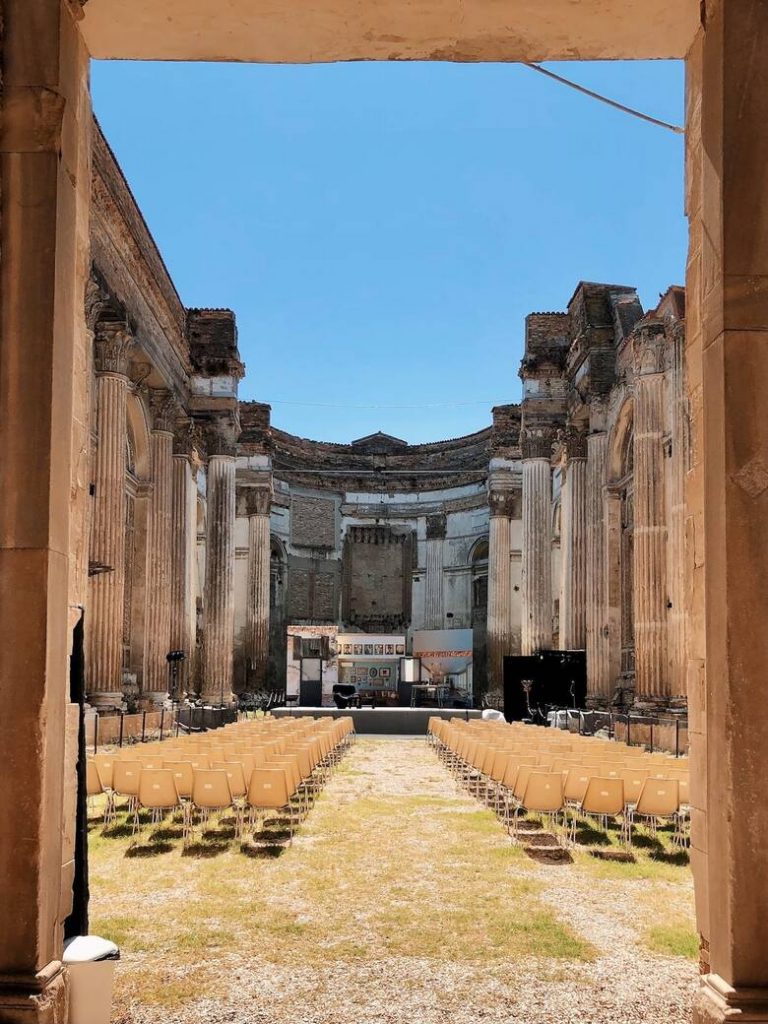
Port Area
The Port of Fano is the holder of the city’s seafaring culture. Divided into two parts, the Old Port and La Marina dei Cesari, it is a very quaint neighborhood with some fine attractions that make it even more magical.
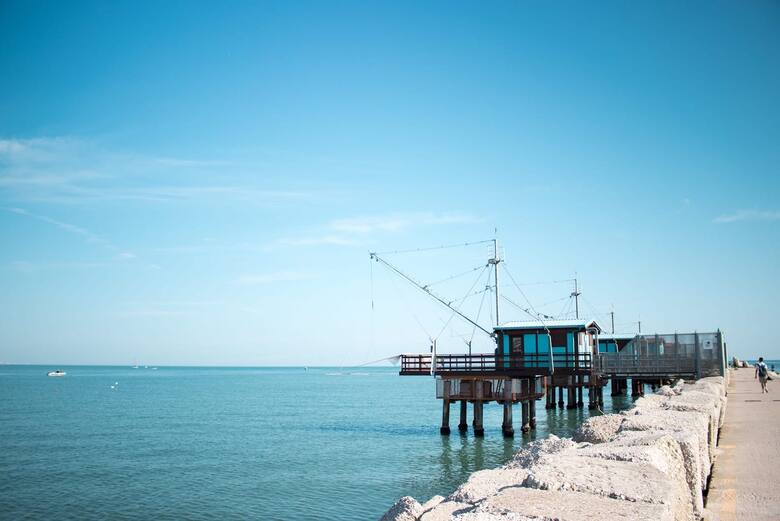
Lysippus Walk
Recently renovated, the Lysippus Promenade is an elevated path a few meters from the sea, alongside the cliffs that protect the Caesars’ Marina. At one kilometer in length, it is one of the longest in the Adriatic. Open year-round and within easy walking distance, especially during a seaside walk.
The origins of the name of this attraction are very peculiar.
At the end of the promenade is an imitation of a bronze statue sculpted by the Greek artist Lysippus, depicting an athlete crowning himself. The original artifact, accidentally found in 1964 at sea by some sailors from Fano, was later purchased by the Getty Museum in Malibu where it is still on display.
The Squero
The Squero is the ancient neighborhood of sailors, “portolotti” in Fanese dialect, which stretches from the bases of the Malatesta Fortress to the harbor. With its small houses it skirts the entire end of the Canal, starting from the Borghese Dock to the sea. A few steps from the northernmost bank, one can access the neighborhood called “El Gugul,” with the old nets used by fishermen and the brightly colored sailors’ sails decorating the small alleys.
Suggestive place to say the least is definitely worth a visit. To describe its uniqueness and authenticity in words is not an easy task. Better go and see it in person!
The Paintings
Fano’s last seafaring attraction is the Quadri, located on the pier separating the Lido from the Port area. These are four small structures resting on the sea floor and rocks. Rebuilt in the early 2000s, they aim to preserve the memory of tradition.
In the past, the original constructions were fixed fishing posts from land, from which a net was lowered to facilitate catching fish without the need to go far out to sea. Similar facilities can be found throughout the Adriatic Coast, changing names according to the area they belong to. Today the Paintings are one of the most photographed attractions for tourists.
XX September Square
Let us now turn to the heart of Fano and some of the most beautiful places in the Historic Center, starting from Piazza XX Settembre.
Located about halfway down the main street of the Center, Corso Giacomo Matteotti, the square is characterized by the meeting of many architectural elements belonging to different historical periods. Among the most characteristic attractions is the Fountain of Fortune, built during the Renaissance period. A building decorated with four lions carved into the corners of the above statue depicting the Goddess of Fortune, a deity to whom a temple was dedicated in ancient times and who gave the city its name: Fanum Fortunae.
Filled with bars and restaurants, it is one of the beating hearts of the city. On Wednesdays and Saturdays it hosts the city market, where you can wander among stalls looking for the best deal.
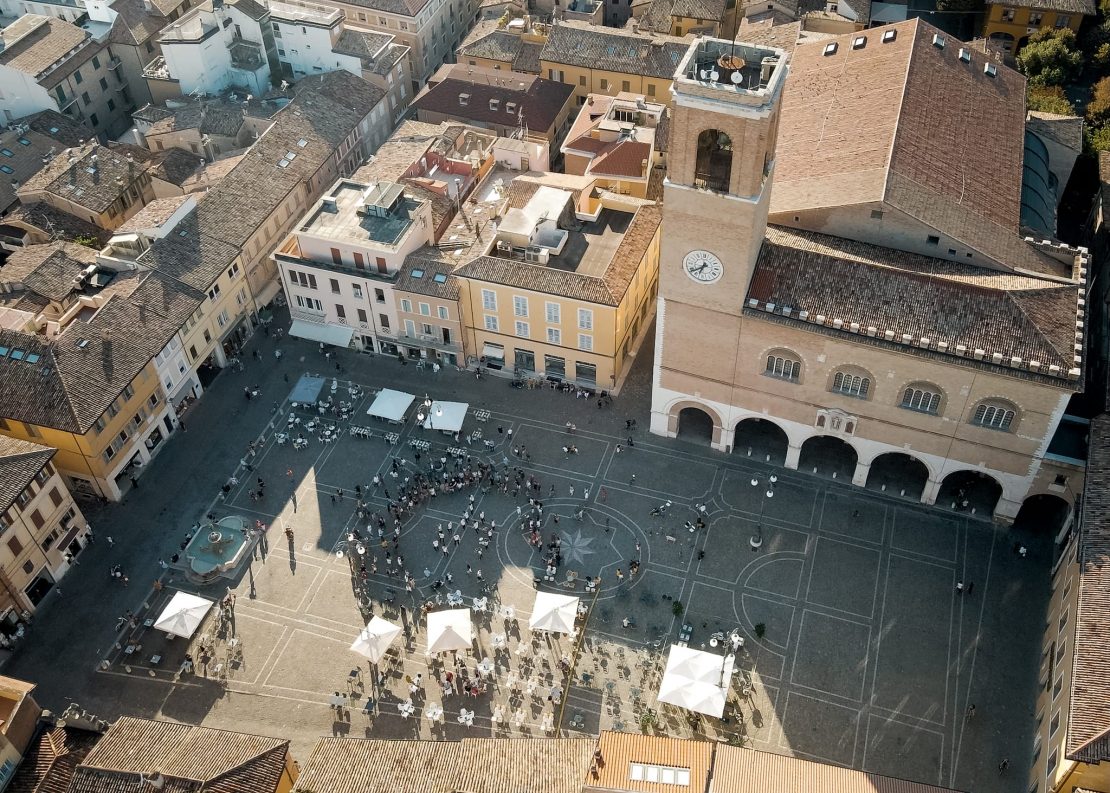
Malatesta Court, Archaeological Museum and Art Gallery
In one corner of Piazza XX Settembre, passing through the Borgia-Cybo Arch built during the Renaissance period, one can enter the Corte Malatestiana, a large courtyard overlooked by several buildings, some of which were already present at the time of Fano’s passage under the rule of the Malatesta lords and some of which were commissioned by the very Rimini family that ruled the city for more than a century. After the departure of the Malatesta family, the Court played different roles while always remaining one of the most typical places in the city. Since 1898 it has housed the San Domenico Civic Museum and Art Gallery.
Fortune Theater
Originally named Palazzo del Podestà and built in 1299, the most impressive building in Piazza XX Settembre is what we know today as Teatro della Fortuna. A venue for performances for centuries, the theater was the victim of a bombing in 1944. Following a renovation, it reopened its doors in 1998 and since that day has again been able to accommodate the public who occupy its stalls for various kinds of events.
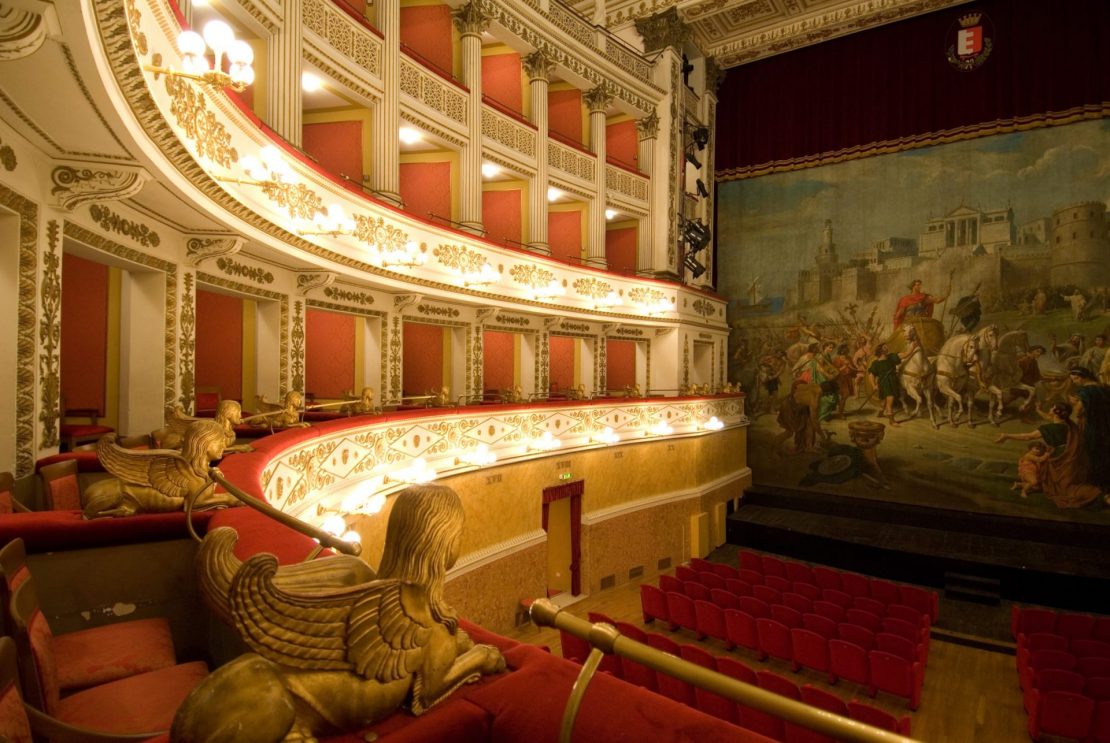
Malatestian Fortress
Built in the 15th century at the behest of Sigismondo Malatesta, the Rocca Malatestiana is one of the most impressive buildings in the city. Located at the end of the Roman city wall, it has a structure that consists of a large inner courtyard protected by high walls extending for four sides and a moat. In front of the entrance it is also possible to stand in the adjacent park. The fortress retains its original form even today, although time has necessitated some modifications, except for the rocchetta and keep, which were destroyed by Nazi soldiers during their retreat.
Today the facility is used for a variety of purposes. In addition to a lively bar, all kinds of events and cultural events can be attended inside.
Sangallo Bastion
Starting from the Rocca, walking along the walls, it takes a few minutes to reach Bastione Sangallo, a small fortress built between 1532 and 1552 at the behest of Antonio da San Gallo the Younger to defend the city walls. Once you enter the beautiful inner garden, you can admire the remains and enjoy a beautiful view.
Today it is run by an association that manages the reception and enhances the place by organizing cultural events and concerts.
Hermitage of Mount Jupiter
Located a few kilometers inland from the city, the Hermitage of Mount Jupiter, erected in the 17th century, is the right place for anyone who likes to walk in the green and enjoy some country air. Once you reach the site and cross the steps leading to the entrance you will enter a large monastery, still inhabited today. A destination for many Sunday outings, the Hermitage consists of a large garden and several buildings including the Old Library, and the Old Pharmacy, as well as the belvedere from which it is possible to enjoy a unique panorama that sweeps from the sea to the late countryside.
Religious sites
Among the many places to visit in Fano, the city’s most beautiful and representative places of worship could not be missed. Here are some of them.
Duomo (Cathedral)
The Cathedral of Santa Maria Assunta is located in Via Arco d’Augusto, right in the historic center, and is one of the most prestigious churches in the area, mother church of the dioceses of Fano, Cagli, Fossombrone and Pergola. The present building was erected on the remains of an older building that was hit by fire in 1124. The facade is typically Romanesque, and inside you can admire several notable works, such as the 17th-century Nolfi Chapel, Ludovico Carracci’s “The Virgin with Saints Bear and Eusebius,” and Sebastiano Ceccarini’s “The Assumption of the Virgin.”
San Paterniano
Dedicated to the city’s patron saint, the Church of St. Paternian was consecrated in 1558. The facade was never fully finished, but it is notable for the portal created by the Venetian artist Jacopo Bambagiani, inspired by Michelangelo. Walking through the three naves of the church, one can admire fine paintings and frescoes. A small cloister was also built alongside the structure, surrounded by a large colonnade, which is still used for various types of events.
Other Churches to Visit
In addition to the Cathedral and San Paterniano, Fano is home to many other churches that are worth a visit. From the Sanctuary of Our Lady of the Bridge, located a few meters from the mouth of the Metaurus River, to that of Santa Maria Nuova, passing by the Church of St. Peter in the Valley and many other fine religious buildings scattered throughout the city.
Not only sea, also history and art
With a wide range of offerings covering a wide variety of interests, Fano is an ideal destination for a peaceful and enjoyable vacation, where you can range between nature and history. A journey that starts in Ancient Rome and winds through crucial periods, such as that of the Malatesta, and seafaring traditions handed down from generation to generation, for a vacation to remember.
